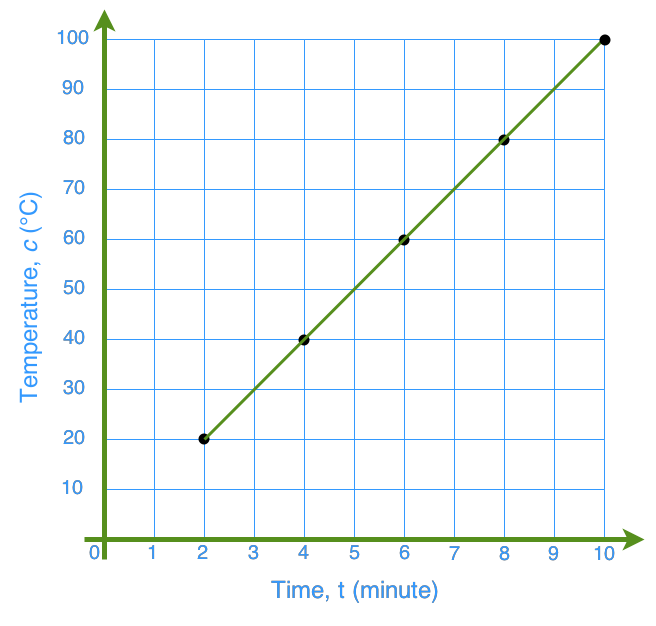Solving linear equations by graphing
0/1
Intros
Lessons
0/13
Examples
Lessons
- A train travels at a speed of 120km/h. The equation that represents the relationship of distance (d) and time (t) is d=120t.
- The graph shows the relationship of the temperature of water, c, and time, t, as the water boils.

- Plot the graph for each set of values. Then, find the equation that represents each relationship.
- Mark ran a marathon. Below is the record of how he did.
Time, t (h)
Distance, d (km)
0.5
4.2
0.8
6.7
1.3
10.9
2.9
24.4
3.5
29.4
4.2
35.3

